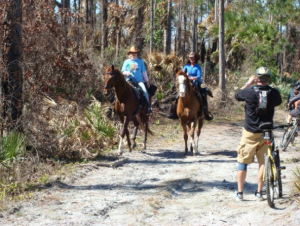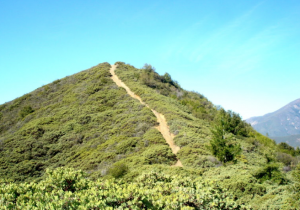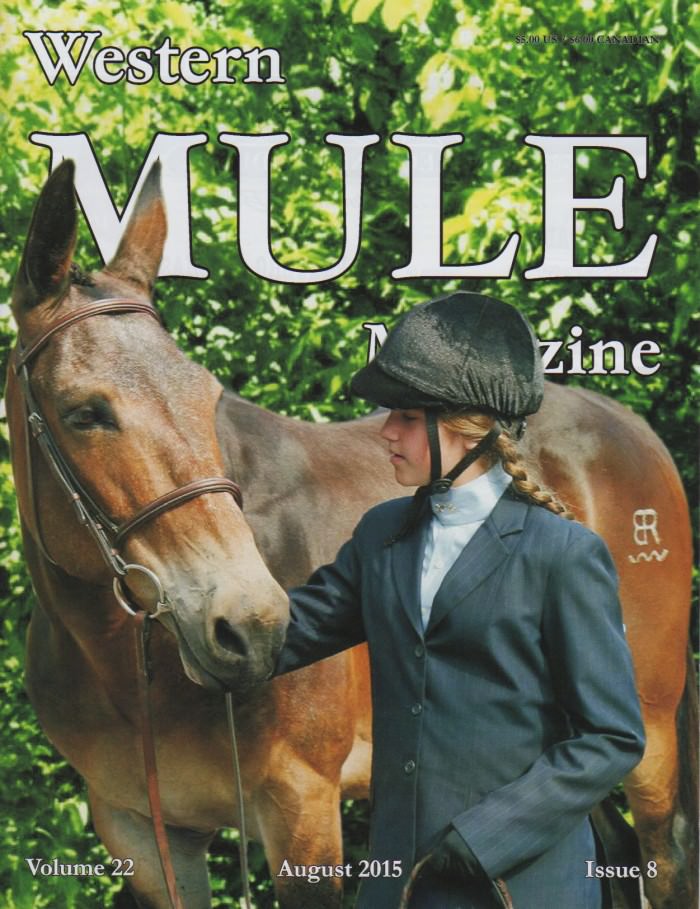 As Published in the August 2015 issue of Western Mule Magazine
As Published in the August 2015 issue of Western Mule Magazine
Words that go together; Peanut butter and jelly, etiquette and safety, mules and trails.
Definitions by Merriam Webster:
- Etiquette: noun: the rules governing the proper way to behave.
- Safety: noun: the condition of being safe from undergoing or causing hurt, injury, or loss
After spending most of the time between January and July of this year speaking at equine expos and clinics across the U.S., I’m at last able to stop packing suitcases and start packing into the backcountry for the summer. As I’ve been getting both myself and my mounts in shape and condition for multiple runs into Montana’s Bob Marshall complex as well as trips into the Pasayten and other wilderness areas in Washington, I realized that I needed a refresher regarding trail etiquette. This is not just for the sake of Miss Manners, but also to help keep me out of harms way. Etiquette and safety are partners on the trail. The breach of one can easily create a lack of the other.
Some of the more universal safety rules that most of us already know and follow are easy to remember, but still bear repeating.
- Carry emergency gear on your body (not on your mount).
- Carry a trail map and know how to read it.
- Pack a first aid kit.
- Maintain a safe distance between animals in a group
- In a group, ride at the speed and level of the least experienced rider.
- Ask before speeding up.
- Make sure that you and your animals are ready for the trail. Muscles and endurance are built gradually.
- Desensitize your mule well in advance of a trail trip.
Here are a few things with which I needed a refresher, and that every rider should keep in mind.
 Multi-Use Means Multiple Users
Multi-Use Means Multiple Users
In most parts of the country, trails are open to and shared by equestrians, hikers, and bicycle riders, among others. Sharing the trail can and does work when people respect each other and work cooperatively to keep each other safe.
- Always check to see what other types of travelers you’ll be sharing the trail with; before you start. If hikers, bikes, or ORV’s are allowed be prepared for those encounters.
Although most trail users will yield the right of way to you, remember that some people do not have the luxury of your experience with stock and may not know how to approach a mule. Think of these encounters as a wonderful opportunity to inform and educate other users with a friendly approach. Education with friendly respect will greatly reduce bad trail encounters for everyone.
 Yield With Common Sense
Yield With Common Sense
Although the convention for trail right of way is that bikes give way to hikers, and both bikers and hikers make way for horsemen, temper this with common courtesy and common sense on all trails and in all situations.
If the approaching hiker/biker party is struggling or has more of a burden than you, or has fewer options to “pull over”, be courteous and let them pass by, regardless of who might technically have trail priority.
 Uphill Travel is Hard, Don’t Make it Worse
Uphill Travel is Hard, Don’t Make it Worse
Traffic going up hill has the right of way regardless of mode of travel. Traveling uphill is a lot of work for horses, hikers and bikers. They’re usually focused downward and trying not to lose any of the precious momentum they need to make the climb. Make it easier on these poor souls by letting them make the call about stopping or continuing their slow plod.
 Leave No Trace is More Than You Remember
Leave No Trace is More Than You Remember
Leave No Trace (LNT) can be more than just picking up after yourself. There are seven main tenets of the LNT movement and all of them apply to stock users.
- Plan Ahead – A little preparation can save a lot of hassle later. TrailMeister.com is a free online resource that allows you to check the area, trail conditions, find how t contact the local land manager and even check the weather before you load the trailer.
- Travel on Durable Surfaces – If it’s a muddy mess find a drier route.
- Dispose of Waste Properly – If you packed it in, pack it out.
- Leave What you Find – Trail treasures are cool. Give the next adventurer the same thrill you had by leaving what you found where you found it.
- Minimize Campfire Impacts – Pay attention to fire bans and reuse exiting fire rings.
- Keep Wildlife Wild – Follow bear wise practices and if you travel with your dog don’t let it hassle the natives.
- Be Considerate – “Nuff said.
 Say Hello
Say Hello
When you run across other trail users stop and chat. It’s about more than just being friendly; it’s about safety and making people equate equines with positive experiences. Ask about trail conditions, stream crossing, water sources, etc. Of course the exception to this rule is the rare event that you encounter someone who makes you feel unsafe. If that happens keep moving, pull out your cell phone if you have one, or pretend you’re with a group even if you aren’t.
These are just a few examples of safety and etiquette notions that we should keep in mind while we’re on the trail. Remember that although you’ll follow these common sense guidelines others may not. Don’t let them get you down.
You may run into some people that feel that they have a right to do what ever they want. You’ll see places where horses where tied to trees and the bark was rubbed off. You’ll find wide braided trails around muddy areas with foot, hoof, and tire tracks adding to the damage. You’ll have a biker fly past you with no warning.
Those are the dregs that make the worst impressions. Keep both eyes open for them for your own safety, but also recognize the many more people are polite, courteous, and enjoyable. And finally, make sure that the people you meet on the trail put YOU into the courteous and polite category.
As always for more information on this and many other trail riding topics visit www.trailmeister.com the world’s largest horse trail and equine camp location guide.


